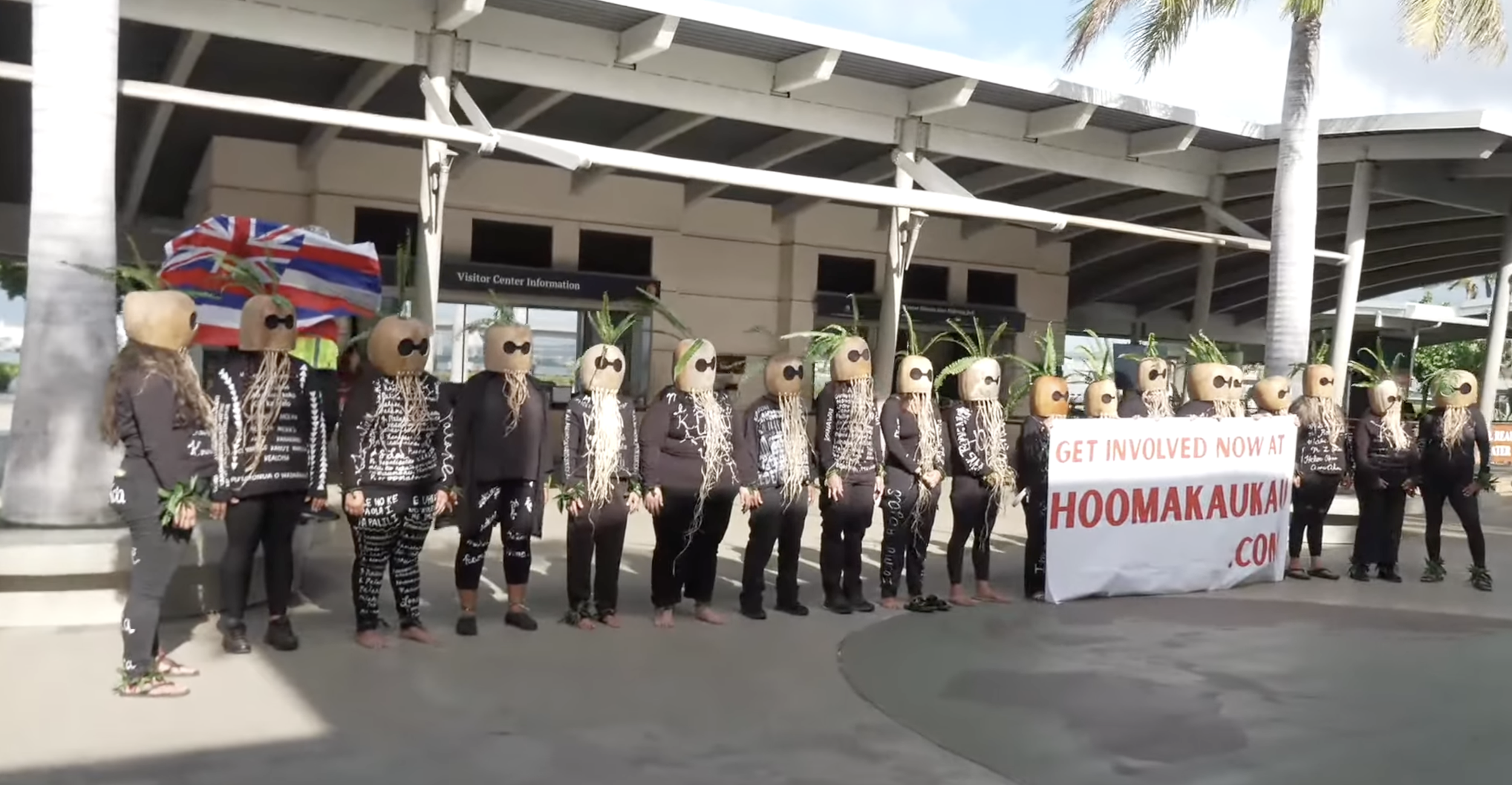Governor Green’s Strategy of Military Appeasement Betrays Ignorance - and Hawaiʻi’s People
Despite widespread outcry and public opposition, Hawaiʻi Governor Josh Green has doubled down in his attempt to appease the Army’s desire for a fast-tracked land deal, to continue live fire training and other military activities at Pōhakuloa and on Oʻahu.
Green’s latest letter to Army Secretary Dan Driscoll lists a number of “state integrated priorities” and a “settlement framework recommendation” valued at an unsubstantiated but now widely-touted $10B in potential federal contributions.
While the letter indicates no meaningful commitments from the military, other federal agencies, or Congressional budget leaders, what it includes, and what it does not, reveals an extremely concerning lack of knowledge of the military’s history of broken promises, and its economic, environmental, cultural, and social costs to the islands. The cost of the Governor’s continued acquiescence to the Army’s demands may accordingly far, far exceed the monetary benefits he is asking for in exchange for the continued bombing and occupation of Hawaiʻi’s ʻāina.
Many of the ideas in Governor Green’s proposal, such as $500M for the clean-up of UXO and other military contaminants (a paltry sum when compared to the $400M spent to remediate just 10% of Kahoʻolawe, or the $1.2B the Board of Water Supply needs to navigate the Navy’s Red Hill water crisis); the construction of 6,500 housing units, to offset the 14,700 private residential rentals occupied by military service members; and the relinquishment of certain federal lands in Mākua and Waikīkī; fall far, far short of the military’s existing legal and moral responsibilities to the Hawaiʻi community, and to its own service members and families.
A U.S. Army soldier with the 25th Infantry Division, fired an M2 .50 caliber machine gun during an exercise in February at Pohakuloa Training Area on Hawaii island. Credit: Staradvertiser
Other ideas, such as prioritizing the protection of Papahānaumokuakea or the conversion of cesspools - while generally seen as good things - are so disjointed that some have speculated that their inclusion was the result of administration staff asking random individuals what they would have wanted to see in a land deal.
Still others, such as the federal funding of liquefied natural gas (LNG), would even be harmful for Hawaiʻi, its people, and its overall energy security.
Most telling, however, is what Governor Green’s proposal does not include.
Missing is any assessment of the tens if not hundreds of billions of dollars the military has and will continue to cost the islands. This includes:
A meaningful assessment of the billions it will cost to continue navigating the Red Hill catastrophe, to remediate unexploded ordnance (UXO) and military toxic contamination throughout Hawaiʻi, and to deal with the medical and public health costs of everything from PFAS in our drinking water wells to chronic childhood lead exposure in the communities surrounding the Puʻuloa Range Training Facility, among many other impacts;
The opportunity and direct financial costs associated with the foreclosure of local agriculture and food security, and a continued dependency on foreign goods, due to military land occupation, contamination, and the introduction of invasive species such as the coconut rhinoceros beetle, devil weed, and octocorals;
The devastating and irreparable harm of the continual wildfires resulting from military training that has burnt through thousands of acres of native habitat, leaving charred landscapes ripe for colonization by invasive weeds - such as those recently seen at Schofield Barracks and the Pōhakuloa Training Area;
The opportunity costs arising from the military’s failure to relinquish hundreds if not thousands of acres of land used for water-guzzling golf courses, beachfront recreational facilities, and other non-military uses, as called for under Pub. L. 88-233; and
The socioeconomic costs of everything from disproportionate rates of gender violence including crimes against children, to widespread and unaddressed mental health issues that have lead to chronic suicides and shootings;
among many, many others.
Other costs, such as the destruction and desecration of iwi kūpuna, sacred sites and ʻāina; the associated termination of Native Hawaiian traditional and customary practices; and the ongoing dispossession of Kānaka ʻŌiwi from their ancestral lands, are also beyond any possible quantification.
The legal processes the Army should be required to follow would provide much-needed opportunities to much more fully and transparently vet the costs of the U.S. military to Hawaiʻi and its present and future generations - and to thereby allow the public and policymakers to meaningfully assess the best path forward for our islands.
However, implicit in the Governor’s latest proposal is the strong suggestion that he may seek legislative exemptions from existing environmental, cultural, land use, and land disposition laws - or to circumvent them, using his purported emergency powers.
This would likely only further inflame the substantial opposition that has already grown from his decision to enter into closed-door negotiations in this matter of overwhelming public concern. Immediately before Governor Green’s August decision to fast-track a land deal with the Army, the Hawaiʻi County Council passed a resolution calling for an end to the bombing and desecration of Pōhakuloa, due to environmental, cultural, and wildfire impacts. The Maui County Council quickly followed suit. A coalition of 40 Native Hawaiian organizations issued a statement warning against any fast-tracked, behind-the-scenes land deal, and urged the Office of Hawaiian Affairs Board of Trustees to stand with them. Groups like Ka Lāhui Hawaiʻi, Native Hawaiian Legal Corporation, and the Sierra Club of Hawaiʻi hosted webinars to highlight the deep problems with the Governor’s approach, and a new organization, Nā Wahine Koʻi Puʻuhonua, rose up “against being forced to serve a country that continues to create division within our people, marginalize & disrespect us” (read more and sign up to support the group here). Critical questions about the actual benefits of the military to Hawaiʻi and its potential to aggravate, rather than relieve, geopolitical tensions in the Indo-Pacific region - as well as our ever-growing climate crisis - also were and continue to be raised.
"Nā Wahine Koʻi Puʻuhonua is a new organization that has joined dozens of others in opposition to Governor Green's secret dealmaking with the U.S. Department of War." Source: @APECEpic on Youtube.com
Nonetheless, Governor Green appears undeterred.
The Governor has tried to justify his defiance of public sentiment, due diligence, and our legal processes by repeatedly threatening the military’s potential use of eminent domain - something the Army itself has curiously not raised. There is little indication that he has spent any, much less a commensurate, amount of time and energy convincing the military that simply taking Hawaiʻi’s land outright would be a strategic and political disaster, and that there is good reason to follow established laws and processes.
For a growing number of observers, the short-sighted and uninformed vision of Governor Green therefore seems bent on forcing Hawaiʻi’s “consent” to the military’s desire for a quick and convenient land deal, despite unaccounted-for and long-term economic, environmental, cultural, public health, and social costs likely to far outweigh his $10B ask.
Those seeking to urge the Governor to respect Hawaiʻi’s ‘āina, people, laws, democracy, and dignity can do so here (sample comments provided at this link).


